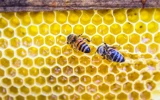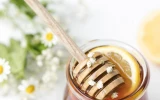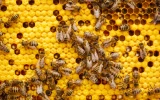How Much Beeswax Does a Hive Produce Per Year?
Did you know that beeswax comes from honey? When bees eat honey, their bodies secrete beeswax which is used to build their honeycombs. But one does wonder, how much beeswax does a hive produce per year?
On average, a beehive produces 1-2 lb of beeswax per year. As a byproduct of honey production, bees need to consume 6-8 lbs of honey to produce one pound of wax. One bee makes 8 wax scales in 12 hours.
Beeswax is an essential material for bees. It’s used to build combs where they raise their brood, and into which they store pollen and honey for winter. As long as the colony grows, so does the need to produce more beeswax to expand their hive.
Summary
- A hive can produce 1-2 lbs of beeswax per year
- Worker bees have special wax-producing glands on their abdomen
- A worker bee’s wax gland will steadily decline from day 18 until the end of its life
- It takes 12 hours for one bee to make 8 wax scales
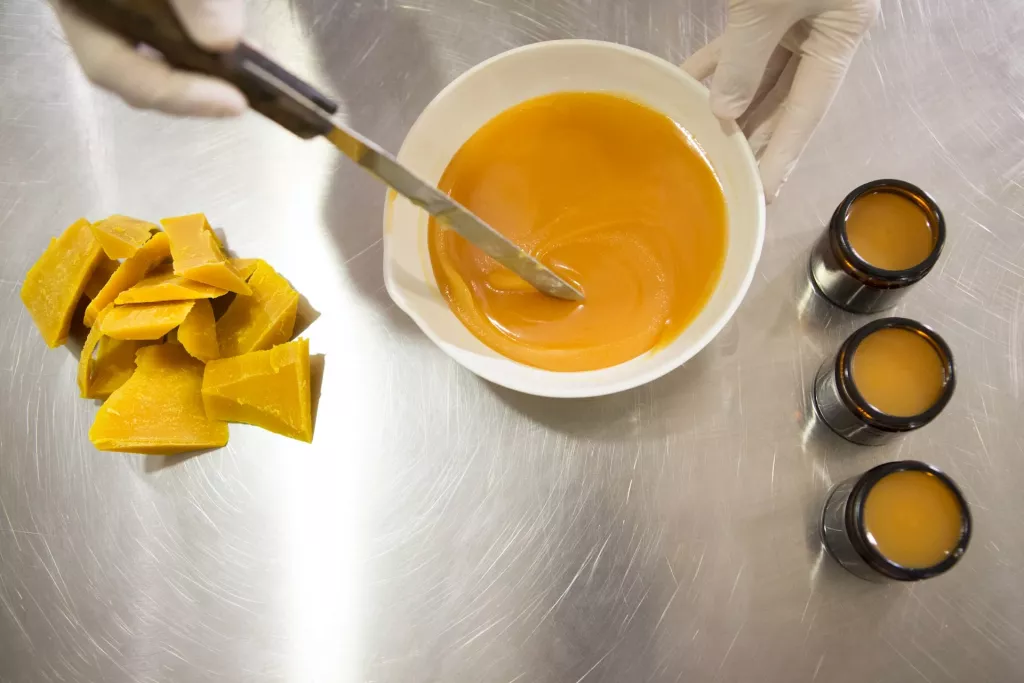
How Much Beeswax Does a Hive Produce Per Year?
According to expert beekeepers, one to two pounds of beeswax can be collected for every 100 pounds of honey harvested. Bees need to collect nectar from approximately 30 million flowers to produce that much honey.
Honey consumed by bees is converted to beeswax which is essential to the bee colony. Beeswax is used to build combs and glues everything in place. Worker bees are typically the ones who make beeswax. They have 8 special wax-producing glands on their abdomens that makes 8 wax scales.
Other worker bees gather the fallen scales and chew on them with their mandibles. The added saliva softens the wax and is deposited along a line to form the midrib of the comb and additional wax is placed on it to build out the comb.
Bees can produce 8 wax flakes in 12 hours so that gives you a picture of how arduous bees are in building their beehive for the colony’s continued survival. By the end of its lifespan, a bee’s wax glands will steadily decline.
Selling beeswax: How much you can earn
In the U.S., you can earn as much as $6 to $20 per pound of beeswax. Prices vary, of course, depending on several factors such as grade, purity, the local region and if the beeswax is certified organic. If your area hosts local craft fairs, vendor fairs, or flea markets, you can sell your wax to crafters who would love to buy your locally sourced beeswax.
You can also create an online store to easily sell your beeswax and honey products to both locals and outside your local area. A great selling point of an online store is being able to reach a wider audience, not to mention spreading beekeeping awareness and the opportunity for people to support local farmers.
More Information on Beeswax
How to Purify and Process Beeswax
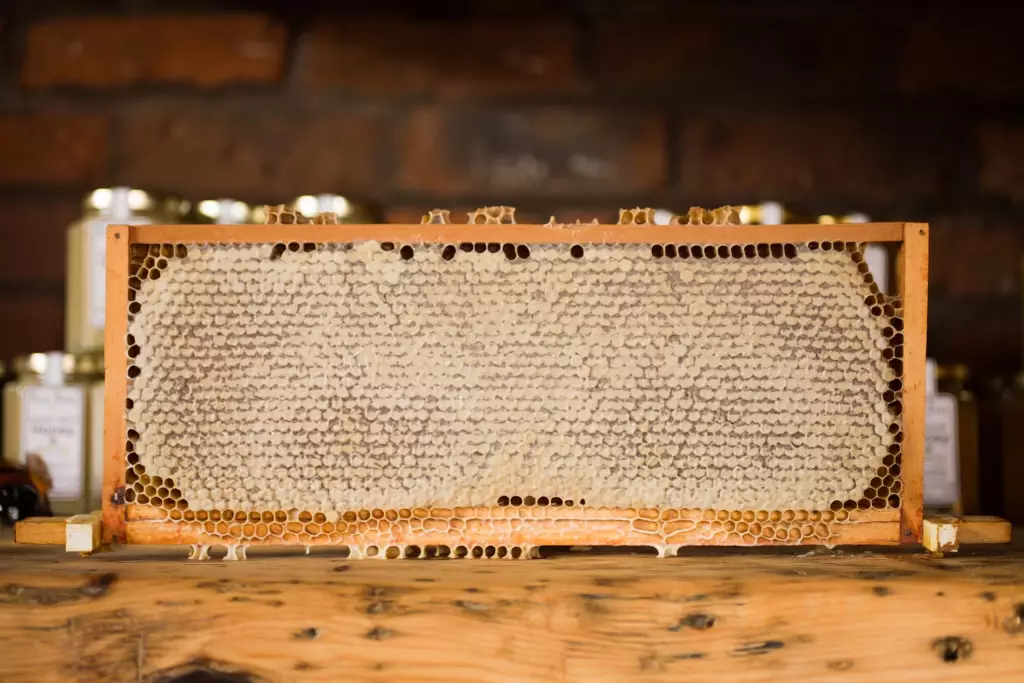
Filtering and processing beeswax at home is fairly simple. All you need to do is remove the impurities in order to create a high-quality final product. You’ll need a fine cheesecloth or any loosely woven fabric as a filtering substitute, a large pot, water and string.
The first step is to wrap the wax in cheesecloth and tie it with a string. If there’s a lot of debris, you can have the option to use several layers of cheesecloth.
The second step is to gently heat up the large pot of water and place the cheesecloth inside it. The wax will melt and leech out of the cheesecloth but the debris will be contained. Once the wax is completely melted, remove the cheesecloth and let the pot cool down.
The last step is to run a butter knife around the perimeter of the hardened wax and lift the wax out of the water.
If there are still impurities stuck on the wax, you can repeat step one until the result is to your liking. It’s also worth noting that the process of purifying beeswax can include bleaching, which is done to remove any colour from the wax, resulting in white beeswax.
The process is done by adding hydrogen peroxide to the melted wax and heating it for a period of time, then filtering the wax to remove the peroxide.
Warning:
- Do not use nice equipment. Beeswax sticks to anything it touches so it’s recommended to use inexpensive equipment you can afford to lose. Once used for rendering beeswax, never use it for anything other than beeswax.
- Don’t ever melt beeswax directly on an open flame. The wax will catch on fire.
- If you want to retain the anti-microbial properties, don’t heat it higher than 175°F. Beeswax has a melting point of 140°F to 145°F, so 170°F is more than enough for melting the beeswax.
The 3 Main Types of Beeswax
Surprisingly, not all beeswax is the same. The quality of beeswax also depends on the bee’s diet and the environment where they live in. If your colony has access to a wide variety of nectar of pollen sources, then their wax will be of higher quality and produce better quality goods like candles, cosmetics and food.
- Yellow
- White
- Absolute
Yellow Beeswax
Yellow beeswax is the most common type of beeswax found on the market. It’s produced from the wax of the honeybee’s comb. It has a typical yellow or golden colour due to the presence of pollen and other natural impurities. This type of beeswax is commonly used in cosmetics, candles and other household products.
White Beeswax
White beeswax is made by bleaching yellow beeswax. The bleaching process removes impurities and discolouration, resulting in white or cream-coloured wax. White beeswax is often preferred for cosmetics and other personal care products because it is considered to be a higher quality wax with a cleaner appearance.
Absolute Beeswax
Absolute beeswax is produced by a process of solvent extraction, which is used to remove all impurities from the wax. This results in a pure, highly refined wax that has a sweet, herbal aroma. Absolute beeswax is used primarily in the production of high-end perfumes and other fragrances.
Uses and Benefits of Beeswax

- Candles
- Cosmetics
- Wood finish
- Food
- Encaustic painting
- Heath
- Other
Candles
Beeswax candles are known for their natural honey scent and for being long-lasting. They also produce negative ions when burned. This helps neutralize airborne pollutants and remove the negative effects of breathing in dust, odours, and mould.
Cosmetics
Beeswax is a common ingredient in lip balms, lotions and other personal care products. It’s a natural emulsifier that lets the liquid and oil components of makeup bind together. It also helps to soothe and moisturize the skin.
Wood Finish
Beeswax is a natural and safe alternative to synthetic furniture polishes. When applied to wood, it creates a protective barrier that helps to prevent scratches and brings out new life to wood furniture.
Food
Beeswax is used as a food additive and is used in the production of some types of cheese, candy, and other foods as a glazing agent, emulsifier and stiffening agent to make liquid food solid.
Encaustic Painting
Encaustic painting is a technique that uses heated beeswax as a medium for the paint. This type of painting creates a unique surface that is both flexible and durable. One of the most well-known paintings that use the encaustic method is the Fayum mummy portraits from Egypt.
Health
For centuries, beeswax has been used in traditional medicine. It has anti-inflammatory properties and can be used to soothe minor skin irritations. It can also be used to lower cholesterol and for relieving pain.
Other
Beeswax is also used in the production of beeswax wraps, an eco-friendly alternative to plastic wraps for food storage. It’s reusable for up to a good year and when it starts to lose its grip, the wrap can be composted or be used as a natural fire starter, making an eco-friendly impact on the environment.
